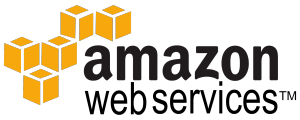This blog post is an excerpt from GovLoop’s recent guide, “Government Health IT: The Fight to Keep Public-Sector Data Secure.”
With missions ranging from detection and mitigation of epidemics to finding safe and caring homes for children in need of stability, public health and social services are critical to keeping citizens and communities healthy. But enacting the technology to support these services has traditionally been costly and results have varied. Monolithic procurements and transactional approaches system-wide have often left health and human services programs and their beneficiaries isolated in siloes instead of benefitting from one another.
But with current technology – especially cloud computing – the public health care system no longer has to function like this. In order to learn more about how health and human services agencies can modernize and utilize secure cloud technologies, GovLoop sat down with Michael Jackson, Health Care Strategy Lead for Worldwide Public Sector at Amazon Web Services (AWS), a leading commercial cloud provider.
Jackson explained that cloud-based modernization solutions are particularly applicable to health care agencies because they offer the ability to bring disparate silos of data together among interdependent programs and providers. Then modern tools, like big data analytics and artificial intelligence, can be employed to enable better decision making for all health care and human services stakeholders.
Several health care stakeholders in the public sector that benefit from cloud technology are human services agencies, health care providers, and researchers. While each has their own place in the health care ecosystem, it is critical that these stakeholders are able to share and access information securely within and between their enterprises.
Connecting stakeholders is especially critical in health and human services because benefits are often delivered by a number of different but related organizations. This means that agencies should have controlled access to each other’s data and work from a single source of truth in order to develop a comprehen- sive view of the citizen and their needs.
Where possible, it would also be of great benefit to health and human services cabinets and states in general to understand and quantify the amount spent per citizen, and correlate any related benefits they may be receiving. Cloud solutions can facilitate this coordination and sharing across agencies to minimize redundancies and, more importantly, improve lives.
AWS has identified three pillars to accomplish these goals in the health care space within the public sector. First, they aim to accelerate enterprise modernization. “From the inside out we look to help our government customers migrate in an incremental way from outdated legacy architectures to a modular, agile, cloud-based approach that is much more cost effective,” Jackson explained. “This is particularly helpful in health care because oftentimes agencies are using outdated systems tied to error-prone processes that are still paper-based.”
Second, AWS helps agencies to more effectively execute on their respective missions and adopt solutions that collectively result in healthier communities. This is facilitated by bringing together disparate datasets and offering powerful tools to visualize that data and maximize its value. “It’s more than aggregation of data,” Jackson said. “This is the ability to glean hidden insights from a multitude of data sources, like pieces to a puzzle, and ultimately transform the ways that public services are designed and consumed.”
The third pillar focuses on care transformation. Specifically, this includes transformation of the delivery of care, as well as helping to transform its payment systems. For care delivery, AWS focuses on making sure that across locations, providers are able to securely consult, collaborate, and update information as
a patient travels from one health system to the next. Jackson explained that coordinating care can greatly improve clinical outcomes and experiences for the patient. In order to make quality-based payments of care more efficient, AWS solutions bring together data and analytics to help detect fraud, optimize utilization rates, and help determine how the state or agency can best allocate its funds.
“It’s so more than just technology,” said Jackson. “We encourage our customers to take an innovative start-up like approach to improving outcomes by solving longstanding traditional problems and reevaluating the way resources are allocated. And the cloud enables that innovation without requiring significant sunken costs in capital equipment and infrastructure.”
By focusing on these three pillars and how cloud can support them, health care agencies will be able to modernize in a way that will promote efficiency internally while providing personalized services to patients and citizens alike. Secure cloud technologies have the ability to transform the way health care agencies operate and ultimately have the capacity to shape the health and welfare of tomorrow’s communities.






Leave a Reply
You must be logged in to post a comment.